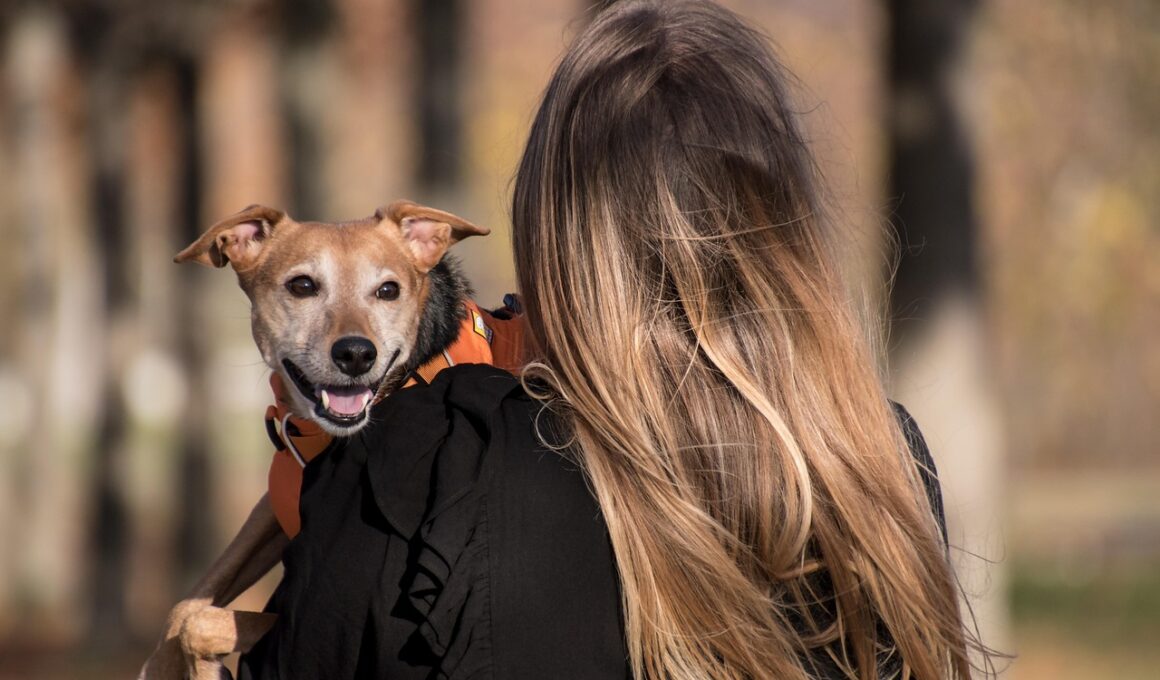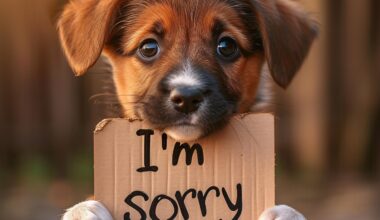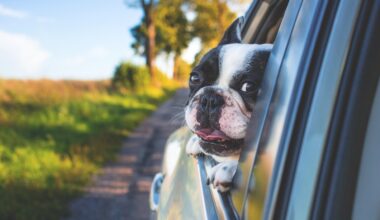Creating a Safe Environment for Dog Photography Outdoors
When it comes to capturing the perfect photos of dogs outdoors, safety should always be a priority. Dogs are curious creatures and can easily get into dangerous situations if they’re not closely monitored. Therefore, before heading out, make sure to check your dog’s collar for a secure fit and that it holds an ID tag with your contact information, just in case. Moreover, consider investing in a quality leash that’s strong enough to control the dog during the shoot. If the environment appears too risky, a harness can provide better control and lessen the chance of escape. Set up a consistent meeting spot so that you and your dog can have breaks and stay hydrated throughout the session. Additionally, try to assess the surroundings for any potential hazards such as busy roads, aggressive dogs, or poisonous plants. Always be prepared for unexpected encounters, as it will help ensure a calm atmosphere conducive to good photography. By planning and being proactive about safety, you ensure greater enjoyment both for the dog model and for yourself during the shooting process. Remember, a happy dog often results in stunning photographs.
Environment Assessment
Before capturing canine shots in the great outdoors, first perform a thorough assessment of your shooting environment. Look for grassy areas, flat ground, and spaces where your dog can run freely. Isolate locations free of toxic plants, sharp objects, or any foreign hazards such as broken glass or rubbish. If your chosen location is near water, check the water quality before allowing your dog to play or drink. Many dogs love playing in water; a clean and safe area contributes to brilliant and joyful photographs. Observing natural wildlife is also essential—avoid areas where wild animals are spotted frequently, as they can startle your dog or create an unsafe situation. During your assessment, refer to local leash laws if the area you’re in requires one. If your dog is well-trained and can be trusted off-leash, consider the benefits of a long leash for better action shots. Making the environment as comfortable and secure as possible will represent the dog’s personality beautifully and yield fantastic photos that you’ll cherish for years to come. Pay attention to the surroundings; it enhances the photography experience for both of you.
Along with physical safety, consider your dog’s emotional comfort during the photo shoot. Many dogs can become anxious in unfamiliar environments, which might lead to unpredictable behavior. Therefore, introducing your dog to the area before starting the session can help them feel more at ease. Spend time letting them explore the field, sniff around, and get accustomed to the sounds in the area. Bring along their favorite toys or treats to facilitate a fun experience, allowing your dog to relax while you prepare your camera equipment. Also, always take breaks and remain patient; it will help encourage a natural demeanor, providing you with more engaging photos. Ideally, your dog should feel like they’re enjoying themselves, making the process rewarding for both of you. Additionally, if your dog shows signs of stress or discomfort, don’t hesitate to pause the session altogether. The health and happiness of your dog are paramount, as the best dog photography comes from genuine expressions. Ultimately, the more relaxed the dog, the more captivating the photos. Capture those moments of joy the right way, focussing on comfort and fun throughout your photography experience.
Weather Considerations
Weather plays a significant role in outdoor dog photography. Planning your photo shoot requires careful consideration of the forecast to ensure a safe and pleasant experience. Extreme conditions like heavy rain, snow, or intense heat can be uncomfortable and even hazardous for dogs. If it’s hot outside, keep your photo sessions short, offer plenty of water, and choose shady locations where your dog can relax. For dogs with thick coats, overheating can become a concern leading to exhaustion or worse. Similarly, cold weather can also be challenging; some breeds handle it better than others, so be attentive to your dog’s comfort level. Additionally, rainy days might provide a unique opportunity for creative photos, yet muddy grounds could potentially create a mess. Use weather-appropriate gear for your dog to keep them comfortable—especially in colder months when dog jackets offer warmth. Always keep a close eye on your dog; unusual weather can lead to unexpected shifts in their mood or behavior. By selecting the right conditions, you enhance the photography experience while prioritizing your dog’s health and well-being, ensuring that they shine in every frame.
Maintaining a well-organized photography session for your dog will not only yield beautiful images but also ensure their safety throughout. Always have ample supplies on hand, such as dog treats, water, waste bags, and a first aid kit tailored for your furry friend. If you’re in an unfamiliar area, carrying a map or GPS device can help avoid getting lost, particularly if the location is spacious. Additionally, consider the importance of a buddy system. Bring a friend along to help manage your dog, especially if they tend to be excitable or reactive. When there’s an extra set of hands, it’s easier to focus on capturing the moment without sacrificing safety. Discuss responsibilities—one person can handle the dog while the other focuses on photography. By setting boundaries ahead of time, visualizing what you want to capture can be executed smoothly, without chaotic distractions. A well-planned session reduces chances of mishaps or lost images. Simon van Winkle once said, ‘The best pictures come from the laughter.’ By alleviating stress, turning these memories into joyful experiences can create lasting capture for memories of pet lovers around the world.
Respecting Other People and Pets
When capturing dog photos in public spaces, it’s crucial to be considerate of other people and pets around you. Not everyone may appreciate a playful dog bounding toward them, particularly if they’re startled by sudden movements. Therefore, practicing good etiquette while conducting your photography session is vital for maintaining a good atmosphere. Always keep your dog on a leash when necessary, and ask people nearby for permission before allowing them to interact with your pet. Not only does this demonstrate respect, but it also fosters a positive environment visually free from interruptions. Additionally, remaining aware of other pets in the area is equally essential; some dogs may react poorly to unfamiliar surroundings. Adapting to situations in the moment is vital. If conflicts within the vicinity arise unexpectedly, re-evaluate your setting to ensure everyone’s safety and comfort. Keep an eye out for distractions that could alter your dog’s behavior in a negative direction. With a respectful approach, your photography sessions can be pleasant not only for your dog but also for those nearby. Dog photography is a celebration of our furry companions and their place within our communities.
Last but not least, capturing your dog’s essence means exercising patience and creativity. The best dog photographs often arise when you’re not forcing them into a specific pose or situation. Allow them to roam freely, play, and engage with their environment. Candid shots can reveal a more genuine side of your pet that staged images may not capture. Emphasis on utilizing natural light can dramatically enhance the quality of photos; therefore, plan your session closely around the golden hours of the day during dawn or dusk. During these times, light is soft and flattering, which helps evoke emotional sincerity in your shots. Remember to employ diverse angles and perspectives; try down low to the ground or from above—each produces strikingly different results. Capture their movement: running, jumping, or chasing a toy will yield excitement in each shot. Don’t forget to take candid shots of the connection you share to showcase that bond; sometimes, a simple shared glance results in the most memorable images. By blending patience with creativity, you’re set to create timeless photography pieces that celebrate your dog’s personality and beauty, leaving lasting memories.
Finally, post-session care is essential to conclude the dog photography experience effectively. Once the photoshoot is completed, be mindful of your dog’s energy levels; ensure they have some downtime to recuperate after their exciting day. Providing comfort and relaxation is vital, so a cozy bed or a favorite spot should be prepared at home. Remember to check your dog’s paws for any cuts or irritations incurred while exploring the environment—these small injuries can happen during their adventures outdoors. After the session, treat them to their favorite snack or reward them with playtime to reinforce the positive aspects of the experience. Keeping a routine after a shoot ensures that your dog associates future sessions with joy and affection rather than stress. The next time you decide to photograph them, their eagerness will likely shine through. Review your photographs together, choosing favorites to print and display can also engage their attention, establishing a cherished bond between you and your dog. Ultimately, celebrating their personality while preserving these special moments creates lasting memories both for you and your unsuspecting audience.


